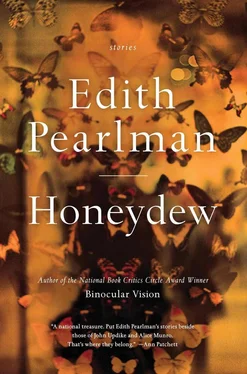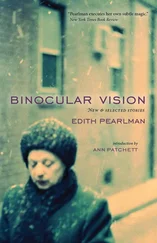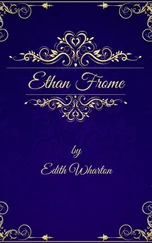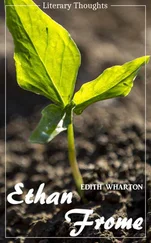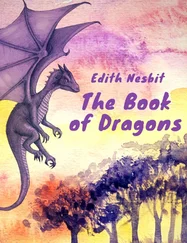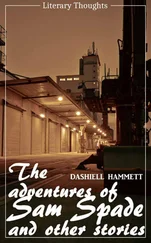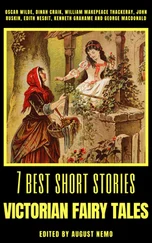“From hyperchromaticity?”
“From old age. She was a seamstress, the article said. She could look at three samples of taupe fabric cut from the same bolt and detect a gold undertone in one, a hint of green in another, a smidgen of gray in the third. She could look at a river and distinguish relative depth and amounts of silt in different areas of the water based on differences in shading that no one else was aware of…So it’s probably safe to say that tetrachromats and pentachromats have a richer visual experience of the world than the rest of us.” But my own experience has become richer in the past fifteen minutes because of this woman sitting in front of my normal, trichromatic eyes. I hope she likes my dreadlocks.
III.
Lyle had been an unfretful baby, though for a while he confused day and night. Pansy slept through the days along with him. Gave him breakfast at twilight and took him for a walk, sometimes across the river to Boston but usually around Godolphin. Lyle lay angled on a pillow in his old-fashioned perambulator, facing her or staring upward at the dark green of trees, the charcoal sky. He turned his head to notice glossy books in the window of the bookstore, always open late. There was a full-length mirror embedded in the door of the pedicure place. Sometimes, again turning his head, he stared at mother and child, and she did the same. There she was, in black leather pants and a glistening white poncho; there he was, a baby whose skin had not yet begun to darken. Her own skin had never darkened, though her southern ancestors had no doubt mingled with their slaves and then admitted the lighter progeny into the mansion. A gene for a dusky epidermis might lie embedded in each of her cells. In his early childhood Lyle went from phase to expected phase — resisted the occasional babysitter, considered the toilet fine for other people, couldn’t bear carrots. He played with blocks in a bored way. Idly he mentioned headaches. The pediatrician found no cause for them.
He continued his habit of staring at everything. He himself was odd to look at — the skinny arms, the thin beige face, the unsmiling gaze. When he took a walk with his mother, he put one hand in hers, like collateral, while his mind wandered somewhere she couldn’t follow, and she had to relinquish the treasured notion that mother and child were one.
He didn’t like picture books — all those primary colors, he wouldn’t look at them. It made her wonder.
The psychologist she took him to said no, he wasn’t on any spectrum. “He’s not interested in those little board books — so what. He’s intrigued by the wider world. Wants to wait and see what catches his fancy.”
She thanked him and stood up, a vision in her striped black-and-white sundress and her black cartwheel. She walked toward the door.
“You too,” the psychologist called. “Wait and see.”
She’d waited several years. One day irregular blurred lines appeared on the wall of her bedroom. Their interiors filled in; now they were splotches. Then they turned into continents. The plumber found the leaks that were their source, and fixed them. Pansy hired a painter and brought home a color wheel. It was a collection of about three hundred long slender cards of thick laminated paper, each with a hole at one end, allowing them all to depend from a metal ring, to be held in the hand at once, or fanned out into a circle. Each card bore seven contiguous squares of similar hues, with names, about two thousand colors in all. She dropped the device with idle grace beside Lyle, prone on the floor. He abandoned his book — he was reading adventure stories now, aping his classmates, though he frequently returned to those old trickster tales.
He inspected this new toy. He knew what he had before him — paint samples. He guessed that these two thousand colors were about as many as human beings could create — in their labs, their paint factories, their electronics workshops. He had endured years of feeling different, of possessing something that was a secret to others and also to him. Now the color wheel enlightened him…People gave hues such hopeful names. There was a square called Orange Froth and next to it Orange Blossom and next to that Florida Orange. Lyle could see the Froth globules deepen to a color that almost matched Orange Blossom but didn’t, and the Orange Blossom itself acquire a gloss as it approached but did not attain Florida Orange. “Mom,” he called.
“Yes, darling?” from the other room.
“I have…” he said, and paused. In the Anansi tales, secrets were meant to be stuffed into the heart and never pulled out; there could be unforeseen results if they were.
She walked in. “…Something to tell me?”
“Well…”
And then came the visit to Dr. Marcus Paul; and then came the tentative diagnosis of a condition, though not an ailment, unknown to most scientists probably because of its weak grant potential. And then came romance. Love at first sight? It can happen. There’s often a lot of palaver.
“I love you not only because you’re beautiful,” Marcus told Pansy a few weeks after they met. “I love you because of your admirable politics, your wish that the world’s population become one color. Because you mop floors in a soup kitchen. Because you cook like a four-star chef.”
She kissed him then, and she caressed his hip with her knee, a gesture that cannot be achieved unless both parties are lying on their sides facing each other. They happened to be lying on their sides facing each other — Lyle was at school — and so the caress impossible under other circumstances was now possible, probable, necessary, unavoidable, though who would want to avoid the deep shudder each felt as joint saluted joint. Then Marcus entered his lovely woman.
Afterward she took over the colloquy. “I love you because of your single-mindedness,” she said. “Your voice. Your dreadlocks. I love you because our coupling feels like destiny.”
“Arranged by Anansi.”
“Anansi? Lyle reads stories about him…”
“He’s a powerful spider who used to make his home in Africa and now lives in Jamaica. But he gets around.”
“Please thank him if you see him…And I love you because together we belong to Lyle.”
“And Lyle belongs to us,” Marcus said. In a state of postcoital clarity he realized that he had found his life’s love and his life’s work in a single ophthalmologic interview. “We are Lyle’s caretakers, guardians, keepers of his secret.”
“It’s like the housemaid marrying the butler,” Pansy said.
“If you say so.” He felt like the stable boy marrying the princess.
There was a brief three-person honeymoon. They visited Italy, where plump lemons offered even more yellows than the ones Lyle knew. They went to Iberia, where the tiles of Lisbon and the airport in Madrid presented a chromatic joy, many colors new and glorious to Marcus and Pansy and about twelve times that many to Lyle.
Marcus’s clinical practice was easy to transfer to a colleague. He’d been mostly engaged in research anyway. After returning from the colorful honeymoon, he built a lab behind Pansy’s spacious house and invited his cousin David to join him. The reclusive David, an optician, was interested in the changes to vision that curved or beveled glass, glass within glass, prismatic lenses, all those things, could make when placed in front of the eye. The two cousins had already designed a number of spectacles that helped people with eye diseases see better.
Their little optical laboratory — incorporated, after a while — produced many improved devices. Telescopic eyeglasses for everyday use. Microscope lenses, and surgical snakes with tiny cameras in their heads, and smoky instruments for astronomers. These tools became much in demand.
Читать дальше
